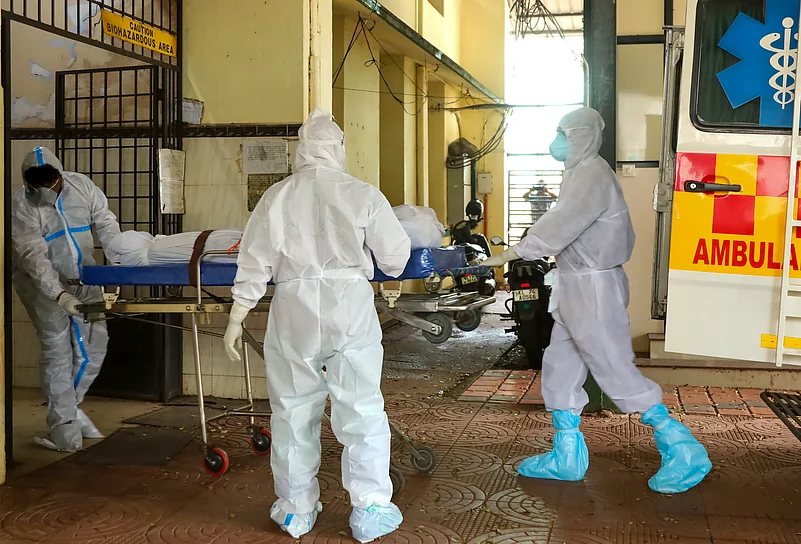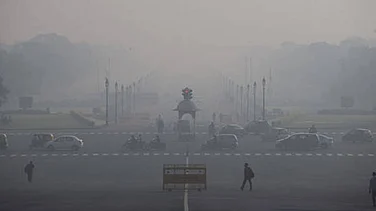Kerala is once again facing the threat of the deadly Nipah virus. This time, a 14-year-old boy from Malappuram District, who was admitted to the hospital with fever, succumbed to the virus on July 21st, a day after NIV Pune confirmed the infection. He had been on ventilator support for the last three days, battling the virus that has a fatality rate of 75 to 80%. The epicentre of the infection has been identified as Pandikkad in Malappuram, where people who had primary contact with the boy have been isolated. According to the Health Department of Kerala, 240 people on the contact list are under observation, with 60 categorized as high risk.
Kerala's encounter with Nipah began in 2018. Health professionals in the state had no prior practical exposure to this virus. On May 17, 2018, Dr. Anoop Kumar of Baby Memorial Hospital in Kozhikode noticed something unusual about his patient, 22-year-old Mohammed Salih, who was admitted with symptoms of fever, severe headache, and sore throat. It could potentially be a case of encephalitis, inflammation of the brain. However, Dr. Anoop noticed that Salih's blood pressure remained consistently high, which was very unusual for encephalitis cases. Salih's condition deteriorated rapidly, and he fell into a coma. Dr. Anoop and his team realized they were dealing with a new and rare virus. Despite having no clinical history of Nipah virus, but only theoretical knowledge, they sent a sample to the Virology Institute in Pune, where their worst fears were confirmed: the presence of Nipah virus was detected.
This was only the beginning of a chilling episode of a massive outbreak.
Three of the family members began showing the same symptoms and were admitted to the Intensive Care Unit at the Medical College in Kozhikkode. The Health Mission, under the leadership of then Health Minister K. K. Shailaja, swiftly sprang into action. A team was formed to trace contacts and identify all those who had come in close contact with Salih. Soon, the doctors discovered that Salih was not patient zero; it was his brother, Mohammed Sabith, who had passed away 20 days earlier. Their father, Moosa, and paternal aunt, Mariyumma, also succumbed to the deadly virus. The death of Lini Puthussery, the nurse at EMS Memorial Hospital in Perambra, Kozhikode, where Sabith was admitted, became a tearful chapter in Kerala's medical history. Among those who died from the virus was 45-year-old Janaki Amma, who was a bystander for a patient in the same ward as Sabith. Out of motherly affection, she nursed Sabith and became infected herself. A total of 18 cases were confirmed, with 16 resulting in death.
The source of the virus was later identified as fruit bats, which were plentiful in the forests of Kerala. According to local accounts, it was assumed that the index patient, Mohammed Sabith, had visited a nearby forest known as Janakikkadu, where he might have eaten fruits possibly bitten or touched by fruit bats.
How the effective health care system in the State helped to contain the outbreak
Well before the rest of the country got introduced to terms as quarantine, isolation, contact tracing and lockdown, Kerala had experienced the social impact of the outbreak of a fatal virus and got exposed to all these terms. In the initial days of the diagnosis, life in the Kozhikkode town was frozen. The city remained devastated. The Government asked the people to avoid public contact as best as possible and to avoid travel if not highly necessary. People were asked to wear masks in public places. An exhaustive list of not less than 2500 people was prepared and kept under monitoring. This is perceived as one of the reasons of Kerala’s effective handling of Covid 19 in the initial phase of the pandemic.
Kerala’s effective management of the outbreak was widely appreciated. The World Health Organization stated that the effective containment of the virus highlights the importance of a strong health care system. “Upon identification of the first case, the state health machinery immediately swung into action, with a team of experienced multidisciplinary experts led by the Director of the National Centre for Disease Control arriving in the affected district on 19 May. Strong political commitment was key. A 24-hour helpline took queries from the concerned community, while the state government used all available channels of communication, including traditional, online and new media, and social mobilisers, to counter rumours and inform people what the risks were and how to protect themselves” , states the communiqué issued by WHO in the website.
The recorded cases of massive outbreaks
The first known outbreak of Nipah occurred in Malaysia in 1999, claiming the lives of 105 people. Most of the victims were farmers, as the virus spread through a pig farm, leading to the culling of one million pigs. Nipah, a zoonotic virus with a fatality rate of 40 to 75%, spreads from human to human only with close physical proximity. Despite this, many people die in the absence of effective surveillance and monitoring systems. Another significant outbreak was recorded in Bangladesh in 2001, resulting in 242 deaths. In connection to this outbreak, India experienced its first known outbreak in the same year in Siliguri, West Bengal, which claimed 49 lives. Since then, recurrent cases of Nipah have been reported in West Bengal, though they have not resulted in large numbers of deaths.
In 2019, Kerala experienced another Nipah case, this time in Chendamangalam in Ernakulam District. A 21-year-old student who tested positive fought a fierce battle against the virus for around 90 days in the intensive care unit and ultimately recovered. Unlike the previous year, there was no proximity to forests, but the area was densely green, a common sight in Kerala, home to various birds and animals, including fruit bats. Lessons from the previous outbreak helped manage the situation judiciously, avoiding a mass exodus from the village as seen in 2018. In Sooppikkada village, Kozhikkode, the epicenter of the 2018 outbreak, residents had frantically fled. The effective intervention of then Health Minister K. K. Shailaja, who visited the village and reassured the people that Nipah was not airborne, helped calm the panic. The Panchayat and health workers conducted educational campaigns on how humans are infected by zoonotic viruses like Nipah.
The state was hit by the virus again in 2021. Twelve-year-old Hashim, the son of Vahida and Abubakkar from Pazhur in Kozhikode, succumbed to the virus in September 2021. Remarkably, no one else, including his mother Vahida, who had been in close physical proximity to the boy, was infected. In 2023, Kerala witnessed two more deaths from Nipah virus among the five confirmed cases. Rigorous contact tracing, surveillance, and monitoring were conducted, with around 700 people traced as contacts.
Why only Kerala?
This question is often asked. Fruit bats are not endemic to Kerala; they live in other states too. However, according to health professionals, Kerala's effective healthcare and monitoring system facilitates the rapid detection of cases. "The symptoms are common to other viral infections—fever, headache, and nausea. People might not seek medical help for such symptoms. In the absence of an effective health surveillance system, it is hard to detect the virus. It might be happening in other states too, but goes unrecorded," states Dr. K. P. Aravindan, a retired professor from Medical College, Kozhikode, and a public health activist. However there are other factors as well. In most of the cases, the index patients die before identifying the presence of the virus. This expedites the spread of the virus causing severe mortality. The proximity to Western Ghats and the population density of the State where people live very close to forest borders are also factors that make Kerala are other factors that expose Kerala to deadly zoonotic virus as Nipah.
















